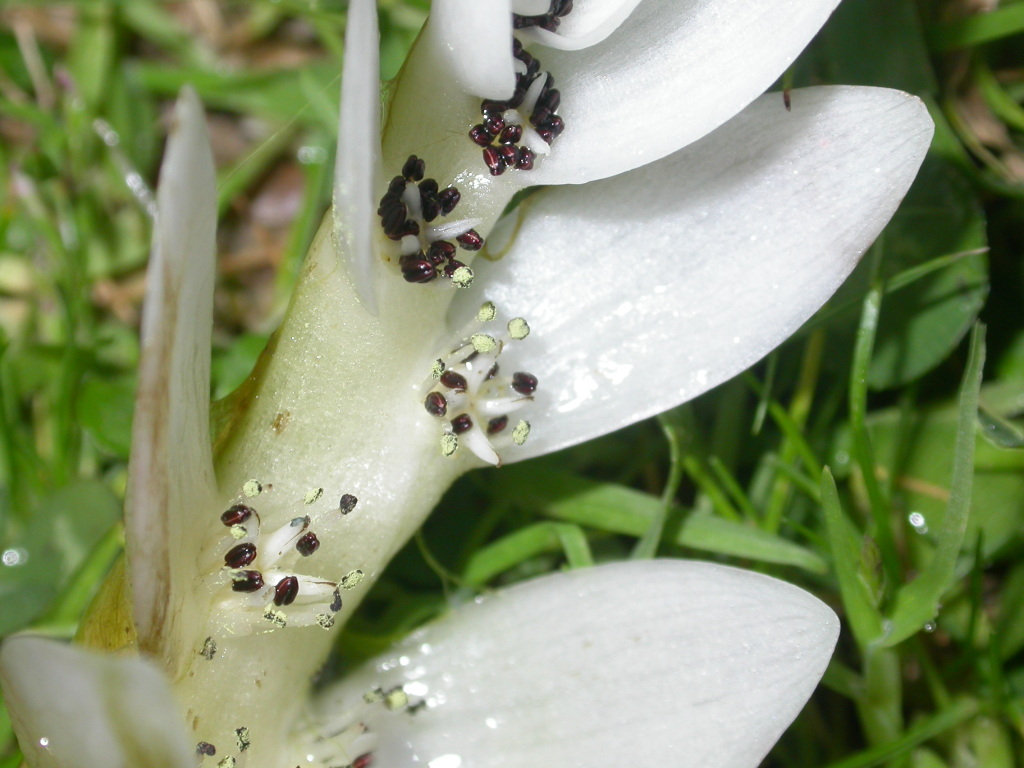Aponogeton distachyos
L.f. Cape Pond-lilyRhizome usually c. 2 cm diam. Leaves with petiole to 60(–120) cm long; lamina floating, c. 17–35 cm long and 4–8.5 cm wide. Inflorescence sweetly fragrant, showy; spike axis white to cream-coloured; 8–14-flowered. Perianth white to pale pink, 1–2.5 cm long; stamens c. 15–20; anthers dark purple; carpels 3–6. Fruiting carpels up to 1.5 cm long, with 2–4 seeds per carpel. Seedling initially with terete leaves. Flowers throughout year, possibly less so Jun.–Aug.
VVP, GipP, OtP, CVU, DunT, HSF, HNF, OtR, Strz. Also naturalised SA, NSW, Tas. Native to South Africa. Naturalised in New Zealand, Europe and South America. It is commonly cultivated in ponds and most naturalised occurrences (e.g. farm dams, reservoirs etc.) are derived from this source.
The floating leaf lamina of Ottelia ovalifolia may be confused with those of this species; however, O. ovalifolia does not have a tuberous rhizome.
Conn, B.J. (1994). Aponogetonaceae. In: Walsh, N.G.; Entwisle, T.J., Flora of Victoria Vol. 2, Ferns and Allied Plants, Conifers and Monocotyledons, pp. 136–137. Inkata Press, Melbourne.
 Spinning
Spinning



